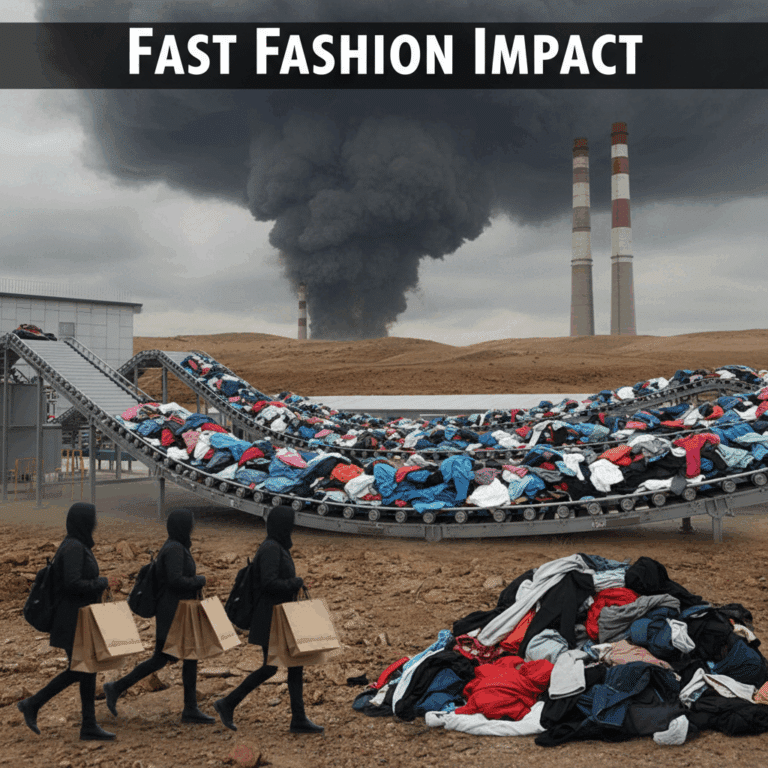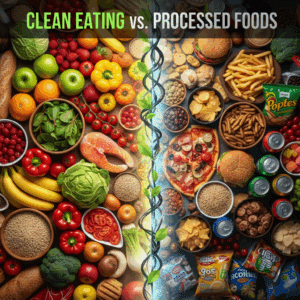Environmental Impact of Fast Fashion
De fast fashion industry significantly harms the environment by driving excessive resource use and pollution. Its rapid production model fosters waste and environmental degradation worldwide.
Fast fashion’s broad footprint includes high carbon emissions, massive water consumption, and extensive pollution, all of which threaten climate stability and ecosystem health.
Addressing these impacts requires awareness of the damaging effects fast fashion has on both the planet and the communities affected by its practices.
Carbon Emissions and Climate Effects
Fast fashion contributes nearly 10% of global carbon emissions, surpassing emissions from all international flights and maritime shipping combined. This vast footprint accelerates climate change.
Each year, the industry emits between 1.2 and 1.7 billion tons of greenhouse gases, a number expected to increase drastically by 2030 if current trends continue.
The focus on rapid production and disposal fuels this emissions growth, as synthetic fiber manufacturing and transportation generate significant pollution.
Water Consumption and Pollution
The textile sector’s water usage is unsustainable, consuming between 93 to 141 billion cubic meters annually, heavily draining global fresh water resources.
For instance, producing a single cotton shirt requires up to 2,700 liters of water — equivalent to about two and a half years of drinking water for one person.
Moreover, toxic chemicals from dyeing and treating textiles pollute up to 20% of the world’s clean water, damaging ecosystems and threatening local communities.
Waste and Pollution from Textiles
The fast fashion industry generates enormous amounts of textile waste and pollution, posing severe challenges to environmental sustainability. This waste stems mainly from rapid production cycles and low garment durability.
Pollution from textiles includes microplastics, chemical runoff, and non-biodegradable waste that significantly contaminate ecosystems. These impacts affect both nature and human health worldwide.
Understanding these consequences is vital for consumers and producers to foster responsible consumption and encourage sustainable industry practices.
Microplastic Pollution from Synthetic Fibers
Synthetic fibers like polyester and nylon, common in fast fashion, release microplastics during washing and production. These tiny particles pollute oceans extensively.
Microplastics constitute about 35% of ocean microplastic pollution, posing risks to marine life and entering the human food chain through seafood consumption.
Washing synthetic clothes emits hundreds of thousands of fibers per load, which resist degradation, accumulating in waterways and soils over many years.
Textile Waste and Disposal
The industry produces around 92 million tonnes of textile waste annually, but only about 1% of used clothing is recycled into new garments, leading to massive landfill pressures.
Fast fashion’s model encourages overconsumption and rapid disposal, causing many garments to be discarded within months, exacerbating waste management challenges worldwide.
Much excess inventory is burned or dumped, intensifying air pollution and toxicity, while resource use in making these discarded clothes remains a wasted environmental cost.
Impact on Ecosystems and Communities
Textile waste and pollution severely damage natural ecosystems, contaminating soils and waterways, which affects biodiversity and disrupts ecological balance.
Communities near textile manufacturing and disposal sites often suffer from polluted water, poor air quality, and associated health problems, highlighting environmental justice concerns.
Community Livelihoods at Risk
Local livelihoods in vulnerable regions are threatened by toxic chemical exposure from textile waste, leading to long-term social and economic hardships tied to pollution.
Ethical Concerns in Fast Fashion Labor
De fast fashion industry depends heavily on cheap labor, often exploiting workers in countries with weak labor protections. This creates numerous ethical challenges that demand urgent attention.
Workers frequently face harsh conditions, low wages, and limited rights, making the labor practices in fast fashion a significant concern for human dignity and fairness within the global supply chain.
Understanding these ethical issues is vital to promoting justice and improving the lives of millions involved in producing fast fashion garments worldwide.
Working Conditions and Labor Rights
Many garment workers endure long hours, unsafe environments, and inadequate pay. These poor conditions are common in factories where fast fashion items are made.
Labor rights violations include forced overtime, lack of breaks, and unsafe buildings, which have led to accidents and even fatal incidents in the industry’s history.
These conditions highlight the need for stronger enforcement of labor laws and worker protections to ensure fair treatment and safe workplaces throughout the fashion supply chain.
Human Rights Abuses and Supply Chain Transparency
Fast fashion supply chains often obscure human rights abuses, such as child labor and forced labor, due to poor transparency and complex subcontracting.
Without clear visibility, companies struggle to ensure ethical practices, making it difficult for consumers to hold brands accountable for exploitation in production.
Improving supply chain transparency is essential to expose abuses, promote accountability, and establish trust between brands, workers, and consumers in the fast fashion market.
Solutions and Industry Reforms
Addressing the fast fashion crisis requires bold reforms emphasizing sustainability and ethics. Industry-wide shifts can reduce environmental damage and improve labor conditions globally.
Innovations in materials, recycling technologies, and fair labor practices offer practical pathways to transform fast fashion into a responsible, circular economy.
These solutions also appeal to increasingly conscious consumers demanding transparency and accountability from brands and manufacturers.
Sustainable Materials and Recycling Technologies
Adopting sustainable materials like organic cotton, hemp, and recycled fibers reduces environmental impact by lowering water use and chemical pollution.
Advanced recycling technologies enable the recovery of fibers from used garments to create new textiles, helping close the loop and diverting waste from landfills.
Investment in innovations such as chemical recycling and bio-based fabrics supports a circular fashion model, drastically cutting resource consumption and pollution.
Such technologies also reduce dependency on virgin synthetic fibers that contribute significantly to microplastic pollution in oceans and soils.
Promoting Fair Labor and Responsible Production
Ensuring fair labor practices is essential to combat exploitation and unsafe working conditions that persist in many garment factories worldwide.
Greater supply chain transparency, enforced labor rights, and fair wages improve the quality of life for workers and establish ethical industry standards.
Brands adopting responsible production methods also strengthen consumer trust, addressing ethical concerns tied to fast fashion’s low-cost model.






